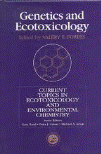Papers in the Biological Sciences

Valery Forbes Publications
Document Type
Article
Date of this Version
2010
Abstract
The fate of the fragrance material, acetyl cedrene (AC), in sediment was examined in a 16 day laboratory experiment using the sediment microbial community subjected to the following treatments: AC (nominal concentration; 0 and 50 μg g−1 dw sediment) and macrofaunal worms (with/without Capitella teleta (formerly Capitella sp. I)). Furthermore effects of AC on microbial respiration in the system were determined by examining CO2 flux. T-RFLP (terminal restriction fragment length polymorphism) was used to analyze PCR (polymerase chain reaction) amplified 16S DNA gene fragments from the sediments to detect changes in the structure and diversity of the bacterial community. In addition, survival of C. teleta in sediment was determined. Lastly, we examined how the interactions between microbes and C. teleta in the sediment affected the above-mentioned parameters. The results showed that there was an interaction between worm treatment and time of sampling on the loss of AC from the sediment. This was caused by AC loss initially being fastest in the sediment with C. teleta present, but at experimental termination there was no significant difference between the two treatments (i.e., with/ without worms) in the amount of AC remaining in the sediment. Survival of C. teleta was significantly reduced by AC at experimental termination, but neither microbial respiration nor structure and diversity of the bacterial community were significantly affected.


Comments
Published in Ecotoxicology 19 (2010), pp. 1046–1058; doi: 10.1007/s10646-010-0486-z Copyright © 2010 Springer Science+Business Media, LLC. Used by permission.